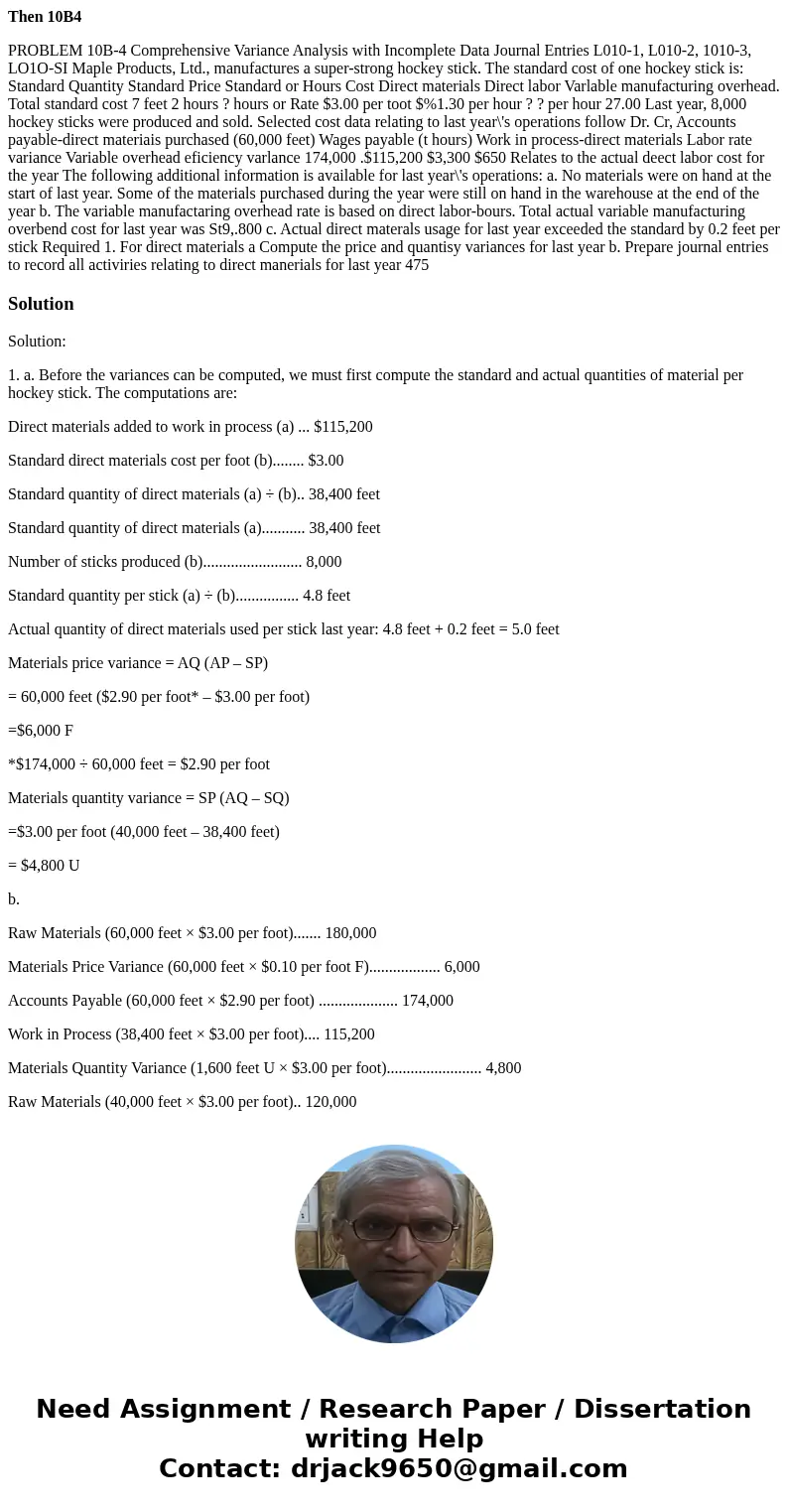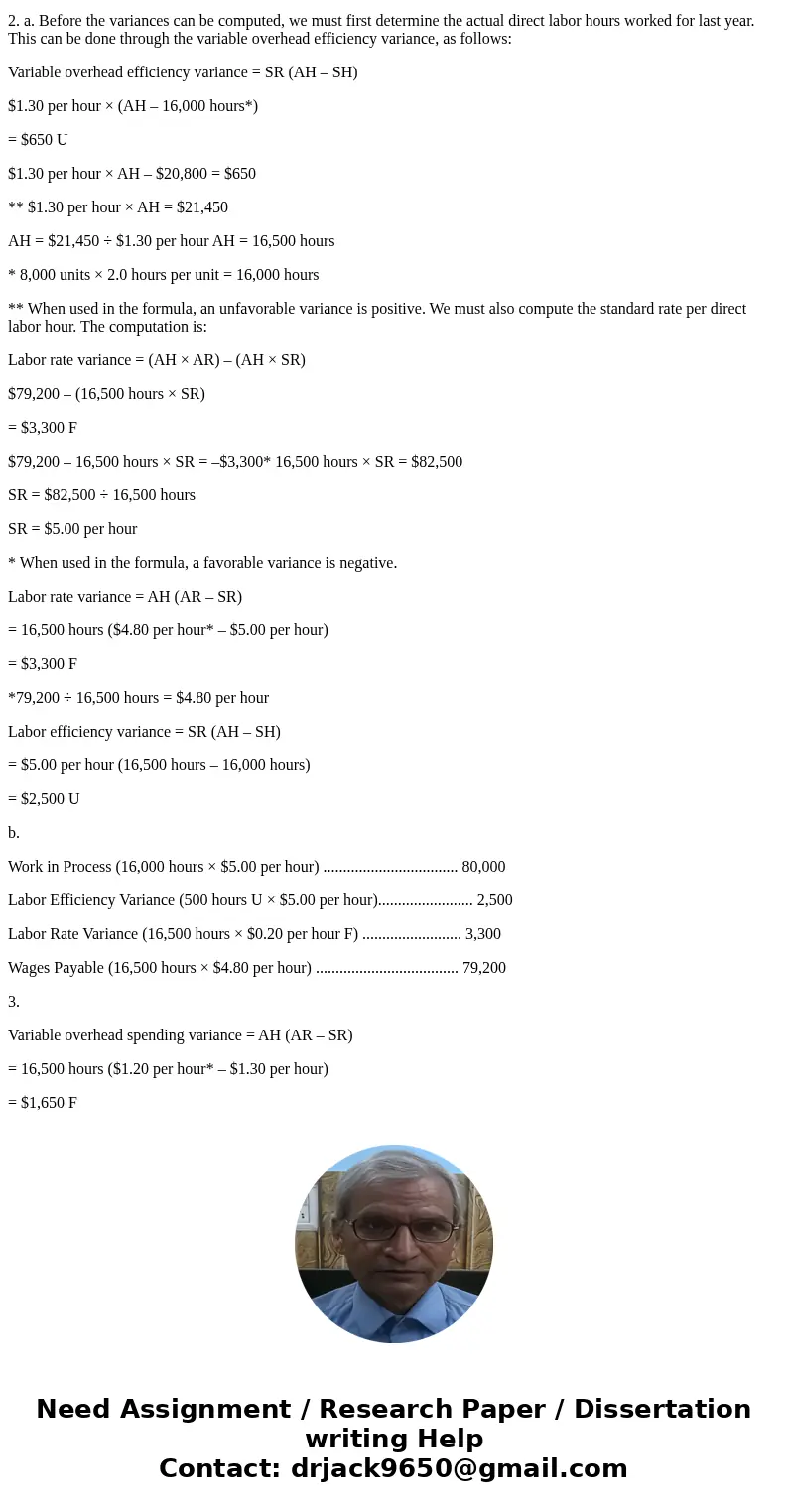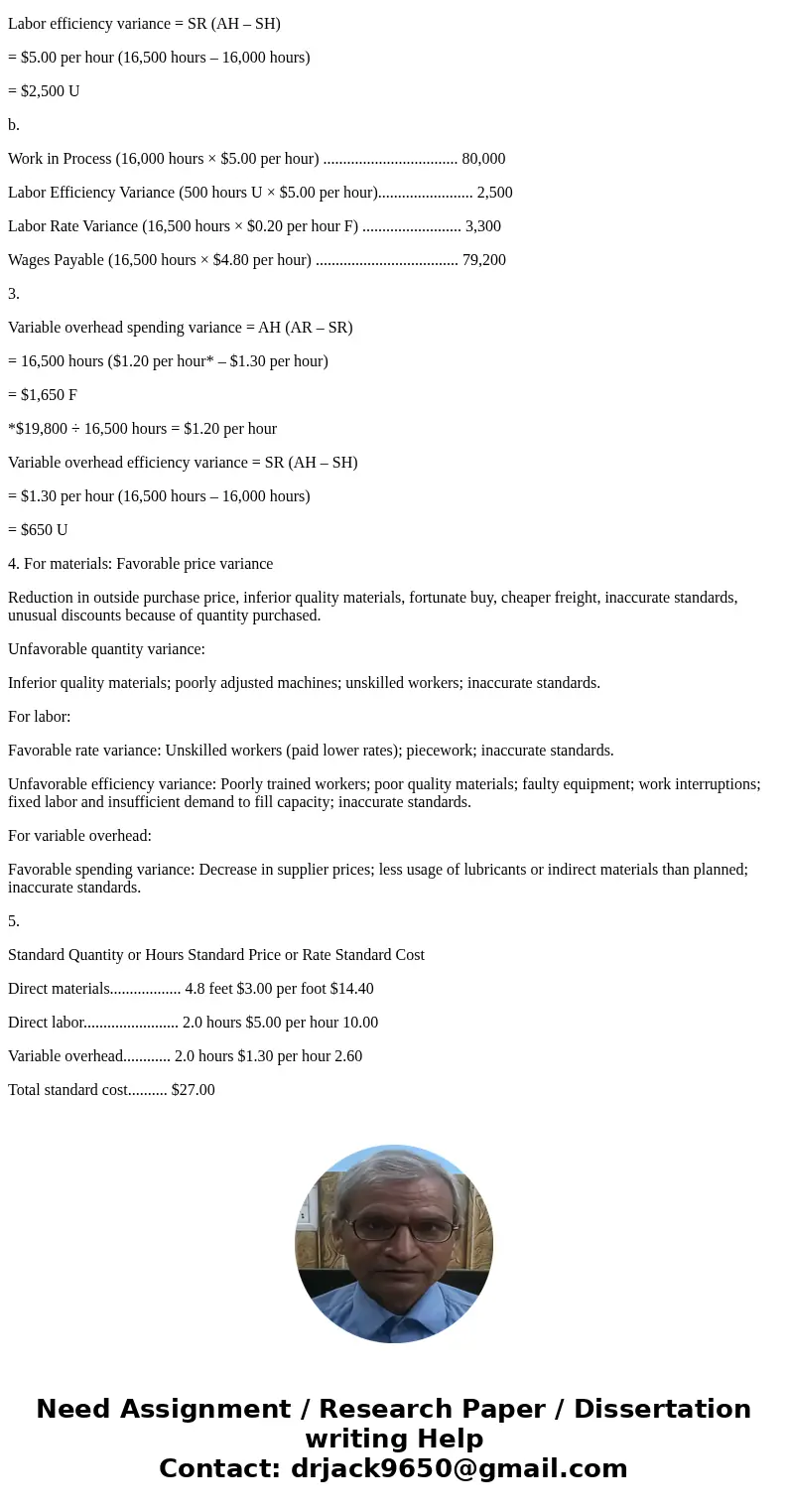Then 10B4 PROBLEM 10B4 Comprehensive Variance Analysis with
Then 10B4
PROBLEM 10B-4 Comprehensive Variance Analysis with Incomplete Data Journal Entries L010-1, L010-2, 1010-3, LO1O-SI Maple Products, Ltd., manufactures a super-strong hockey stick. The standard cost of one hockey stick is: Standard Quantity Standard Price Standard or Hours Cost Direct materials Direct labor Varlable manufacturing overhead. Total standard cost 7 feet 2 hours ? hours or Rate $3.00 per toot $%1.30 per hour ? ? per hour 27.00 Last year, 8,000 hockey sticks were produced and sold. Selected cost data relating to last year\'s operations follow Dr. Cr, Accounts payable-direct materiais purchased (60,000 feet) Wages payable (t hours) Work in process-direct materials Labor rate variance Variable overhead eficiency varlance 174,000 .$115,200 $3,300 $650 Relates to the actual deect labor cost for the year The following additional information is available for last year\'s operations: a. No materials were on hand at the start of last year. Some of the materials purchased during the year were still on hand in the warehouse at the end of the year b. The variable manufactaring overhead rate is based on direct labor-bours. Total actual variable manufacturing overbend cost for last year was St9,.800 c. Actual direct materals usage for last year exceeded the standard by 0.2 feet per stick Required 1. For direct materials a Compute the price and quantisy variances for last year b. Prepare journal entries to record all activiries relating to direct manerials for last year 475Solution
Solution:
1. a. Before the variances can be computed, we must first compute the standard and actual quantities of material per hockey stick. The computations are:
Direct materials added to work in process (a) ... $115,200
Standard direct materials cost per foot (b)........ $3.00
Standard quantity of direct materials (a) ÷ (b).. 38,400 feet
Standard quantity of direct materials (a)........... 38,400 feet
Number of sticks produced (b)......................... 8,000
Standard quantity per stick (a) ÷ (b)................ 4.8 feet
Actual quantity of direct materials used per stick last year: 4.8 feet + 0.2 feet = 5.0 feet
Materials price variance = AQ (AP – SP)
= 60,000 feet ($2.90 per foot* – $3.00 per foot)
=$6,000 F
*$174,000 ÷ 60,000 feet = $2.90 per foot
Materials quantity variance = SP (AQ – SQ)
=$3.00 per foot (40,000 feet – 38,400 feet)
= $4,800 U
b.
Raw Materials (60,000 feet × $3.00 per foot)....... 180,000
Materials Price Variance (60,000 feet × $0.10 per foot F).................. 6,000
Accounts Payable (60,000 feet × $2.90 per foot) .................... 174,000
Work in Process (38,400 feet × $3.00 per foot).... 115,200
Materials Quantity Variance (1,600 feet U × $3.00 per foot)........................ 4,800
Raw Materials (40,000 feet × $3.00 per foot).. 120,000
2. a. Before the variances can be computed, we must first determine the actual direct labor hours worked for last year. This can be done through the variable overhead efficiency variance, as follows:
Variable overhead efficiency variance = SR (AH – SH)
$1.30 per hour × (AH – 16,000 hours*)
= $650 U
$1.30 per hour × AH – $20,800 = $650
** $1.30 per hour × AH = $21,450
AH = $21,450 ÷ $1.30 per hour AH = 16,500 hours
* 8,000 units × 2.0 hours per unit = 16,000 hours
** When used in the formula, an unfavorable variance is positive. We must also compute the standard rate per direct labor hour. The computation is:
Labor rate variance = (AH × AR) – (AH × SR)
$79,200 – (16,500 hours × SR)
= $3,300 F
$79,200 – 16,500 hours × SR = –$3,300* 16,500 hours × SR = $82,500
SR = $82,500 ÷ 16,500 hours
SR = $5.00 per hour
* When used in the formula, a favorable variance is negative.
Labor rate variance = AH (AR – SR)
= 16,500 hours ($4.80 per hour* – $5.00 per hour)
= $3,300 F
*79,200 ÷ 16,500 hours = $4.80 per hour
Labor efficiency variance = SR (AH – SH)
= $5.00 per hour (16,500 hours – 16,000 hours)
= $2,500 U
b.
Work in Process (16,000 hours × $5.00 per hour) .................................. 80,000
Labor Efficiency Variance (500 hours U × $5.00 per hour)........................ 2,500
Labor Rate Variance (16,500 hours × $0.20 per hour F) ......................... 3,300
Wages Payable (16,500 hours × $4.80 per hour) .................................... 79,200
3.
Variable overhead spending variance = AH (AR – SR)
= 16,500 hours ($1.20 per hour* – $1.30 per hour)
= $1,650 F
*$19,800 ÷ 16,500 hours = $1.20 per hour
Variable overhead efficiency variance = SR (AH – SH)
= $1.30 per hour (16,500 hours – 16,000 hours)
= $650 U
4. For materials: Favorable price variance
Reduction in outside purchase price, inferior quality materials, fortunate buy, cheaper freight, inaccurate standards, unusual discounts because of quantity purchased.
Unfavorable quantity variance:
Inferior quality materials; poorly adjusted machines; unskilled workers; inaccurate standards.
For labor:
Favorable rate variance: Unskilled workers (paid lower rates); piecework; inaccurate standards.
Unfavorable efficiency variance: Poorly trained workers; poor quality materials; faulty equipment; work interruptions; fixed labor and insufficient demand to fill capacity; inaccurate standards.
For variable overhead:
Favorable spending variance: Decrease in supplier prices; less usage of lubricants or indirect materials than planned; inaccurate standards.
5.
Standard Quantity or Hours Standard Price or Rate Standard Cost
Direct materials.................. 4.8 feet $3.00 per foot $14.40
Direct labor........................ 2.0 hours $5.00 per hour 10.00
Variable overhead............ 2.0 hours $1.30 per hour 2.60
Total standard cost.......... $27.00



 Homework Sourse
Homework Sourse